 Petzlover
PetzloverBullenbeisser is originated from Germany but Smithfield is originated from United Kingdom. Bullenbeisser may grow 11 cm / 5 inches higher than Smithfield. Bullenbeisser may weigh 9 kg / 20 pounds more than Smithfield. Both Bullenbeisser and Smithfield has almost same life span. Bullenbeisser may have more litter size than Smithfield. Bullenbeisser requires Low Maintenance. But Smithfield requires Moderate Maintenance
Known also as the German Bulldog, the Bullenbeisser was a strong dog which is now unfortunately extinct. There were two regional types – the Brabanter- and the Danziger Bullenbeisser.This Molosser-type dog was native to Germany and was bred for different hunting purposes.
Nobody is quite sure what dogs are included in Molossers, but they are essentially large dogs bred to hunting and rescue, tending to have a shorter muzzle. The Bullenbeisser is famous for the role the dog has played in the development of the wonderful dog we have today, the Boxer. In fact, some Bullenbeissers were crossed by the Boxer Kennel Club of Germany with Bulldogs from the UK.
Not much is known about the history of the Bullenbeisser, but the breed also has a history in the lands of the Holy Roman Empire. The dog was at first a type of Mastiff, large and with the typical brachycephalic head, and used for hunting because of their power.
To improve their dogs, many Bullenbeisser breeders began crossing their dogs with English Bulldogs, introducing a white coat to the Bullenbeisser. Other breeds were also crossed with the dog such as the Bull Terrier, but by the end of the 19th century, the traditional Bullenbeisser was slowly dying out. It was in the late 1870s that German breeders, Hopner, Konig and Roberth used the dog to bring about a new breed, which today is known as the Boxer.
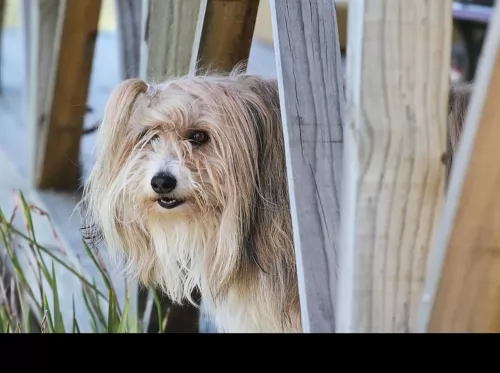 The Smithfield is also known as the Smithfield, Smithy or Tasmanian Smithfield and is a herding dog found in Australia but originating in the UK. There is also the possibility that there was an Australian dog bred at a place known as Smithfield, near Texas which is just inside the Queensland border.
The Smithfield is also known as the Smithfield, Smithy or Tasmanian Smithfield and is a herding dog found in Australia but originating in the UK. There is also the possibility that there was an Australian dog bred at a place known as Smithfield, near Texas which is just inside the Queensland border.
It is thought by some that the Smithfield is extinct. The dog was first introduced to the Land Down Under in colonial times.
The Smithfield isn’t recognised by the Canine Councils, but in 1862 the first Dog Show was held in Australia.
The Boxers lineage comes from the Bullenbeisser. The Bullenbeisser was a fierce, courageous dog, noted for its hunting abilities. The dog was developed into the Boxer so that its body become more defined and more streamlined.
Described as a medium to large muscular dog, standing roughly 63cm in height, he would have weighed in the region of 32kg. He had a short coat, brown eyes and short to medium ears which were half erect, half floppy.
Brown to fawn in color, he had a long tail which was later docked to give the dog a more distinctive, attractive look. The dog also got its attractive fawn color from the English Bulldog. Loyal, active and loving, the Bullenbeisser was a true family dog with a close affinity to children.
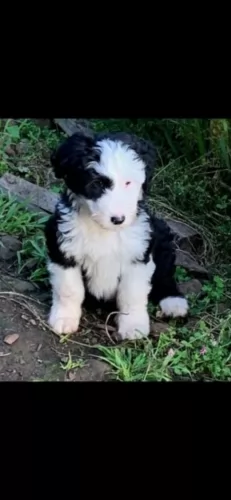 The Smithfield is a medium to large sized dog, strong and square-bodied with a wedge shaped head. Many people liken his looks to a Bearded Collie.
The Smithfield is a medium to large sized dog, strong and square-bodied with a wedge shaped head. Many people liken his looks to a Bearded Collie.
He has a rough, medium length coat. The coat has different colors such as white, black, grey or reddish brown. The coat is shaggy and in fact they are often clipped to give them a groomed look and to prevent grass and burrs clinging to the coat.
The tail of the dog can either be a natural bobtail or it could have a longer tail. When the tail is long it is carried low with an upward turn at the tip. The ears are mostly floppy and held close to the head.
He stands at between 46 to 53cm in height and weighs between 16 and 25kg. A bright, alert expression is a distinctive feature of the Smithfield.
The Smithfield is an active, robust dog and they have well balanced, stable personalities. They are often described as being laid-back.
You won’t find any signs of shyness or aggression with these dogs and they are known to be gentle and calm. They are self confident and well adjusted and also hard working.
They are devoted and loving to their human family and are also intelligent. When they’ve been trained and socialized they make splendid family pets, wonderful with children, just loving to run and play. These are dogs you can rely on to be consistent in nature.
Information on the extinct Bullenbeisser is limited, but because he was used to bring about the Boxer you can be sure that he would have been fearless, courageous and territorial of his property and of his human family.
The Bullenbeisser would have been a good watch-dog and with the right kind of loving care, a most awesome and loving family companion.
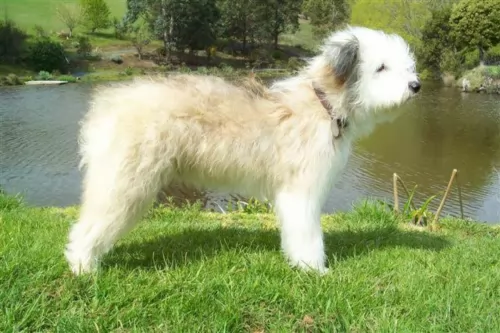 Those who have owned a Smithfield love them and say that once you’ve owned one, you’ll want another.
Those who have owned a Smithfield love them and say that once you’ve owned one, you’ll want another.
These easy going dogs have all the characteristics necessary to ensure a good pet, playmate and companion. They are devoted to their human family, and given the chance will become a very special 4-legged member of any family who appreciates the friendship a such a dog offers.
In general, medium to large breeds like the Bullenbeisser have a lifespan of 10, 11 or 12 years. The life expectancy of these dogs relied much on the lifestyle they led and their diets.
The Bullenbeisser had a deep chest and this made dogs like this prone to gastric dilatation and bloat which can be life-threatening and which requires immediate veterinary intervention. The dog with this disease has distension of the abdomen and extreme discomfort, wanting to vomit but being unable to do so.
Hip Dysplasia is a disease which is more common in larger dogs and is an abnormal formation of the hip socket, resulting in lameness accompanied by painful arthritis.
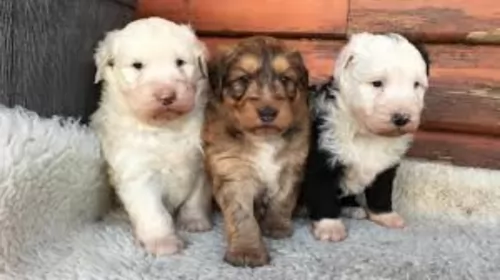 These dogs enjoy exceptional good health and can reach between 10 and 14 years of age.
These dogs enjoy exceptional good health and can reach between 10 and 14 years of age.
You have to be careful with your pet however, because there are quite a few common dog illnesses that can plague your pet, and we look at a few -
This is caused by a contagious virus. Infected dogs develop symptoms such as runny eyes, fever, coughing, vomiting and even seizures. Unfortunately this disease is often fatal. There is luckily a vaccine against it and it is highly recommended for your pet.
Also a very contagious disease which attacks the gastrointestinal system, causing fever, vomiting and diarrhea. It is often spread by contaminated stools and feeding utensils of dogs. Many dogs die from parvo but there is also a vaccine against it.
This is terrible for your pet and is a huge risk for dogs during Summer. Never leave your pet in a car unattended, especially on a hot day. Remember that stub-nosed dogs such as Boxers, Pugs, Bulldogs and Boston Terriers are more prone to respiratory problems and heat can be deadly for them.
The Bullenbeisser was a mastiff like breed with a short, easy-to-care for coat. He would have required a good brushing down at least twice a week to remove the coat from loose hairs. As an active, outdoor-type dog, he would have had to have his ears checked for dirt and the possibility of infection.
Although the Bullenbeisser was a hunting dog, he no doubt led an active outdoor lifestyle. Dogs such as the Boxer and the Mastiff, which are descendants of this dog are the kind of dogs which will need to be exercised regularly, taken on walks and given lots of running games with a ball.
As a medium to larger breed with lots of energy, the Bullenbeisser would have no doubt had home-made food from his master’s table. This food would have included meat and vegetables. As a hunting dog he would have had the chance to get in some raw meat which is imperative for the health of any domesticated dog today.
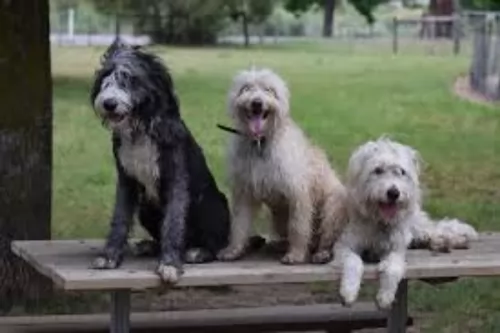 The Smithfield has plenty of energy and loves nothing more than lots of games with the children. He will also look forward to a walk every day as well as other activities.
The Smithfield has plenty of energy and loves nothing more than lots of games with the children. He will also look forward to a walk every day as well as other activities.
When it comes to grooming, you can save money by grooming your dog at home. Whether you have your pet’s hair cut or you leave it as is, get into the habit of brushing the fur at least twice a week. You can speak to your vet or groomer and get advice on what comb of brush to use on your Smithfield.
It you want to cut your pet’s hair, it is important to use the right equipment so you don't accidentally injure him. Certainly if you feel unsure about shaving your dog at home, leave this grooming aspect to the experts.
Check your pet’s eyes. They must be clear and bright. Check inside his mouth for bad teeth. Check inside his ears to make sure they aren’t red with infection.
Your Smithfield is relying on you to provide him with good food. For convenience, it is always a good idea to have a packet of the best dry kibble there is. Check out the label and make sure to buy one that has a good balance of vitamins and minerals.
Give him some tasty homemade food too. Remember to keep it plain and simple. Boiled chicken, brown rice or pasta and spinach, sweet potatoes and carrots are nutritious and tasty. This food can all be chopped up and small portions added to the dry kibble twice a week as a treat.
You’ll never have to worry about digestion problems with your dog. A little bit of raw meat can also go a long way to ensuring his skin stays healthy and free of skin infections. Ensure that he has a constant supply of fresh, cool water.